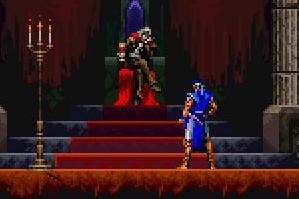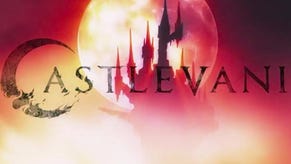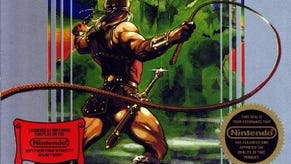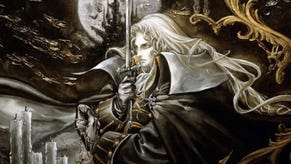Castlevania: Symphony of the Night turns 20 today
The blood moon rises once again.
Castlevania: Symphony of the Night launched two decades ago, to the day, inadvertently birthing a whole new subgenre in the gaming lexicon: the "metroidvania."
Indeed, Symphony of the Night eschewed Castlevania's more linear heritage in favour of a sprawling sidescrolling map of interconnected catacombs, cathedrals and clocktowers. It plucked its structure wholesale from Metroid's school of level design, with a non-linear labyrinth gradually unlocking, yet Symphony of the Night managed to do so while still retaining the mechanics, design and spirit of Konami's storied series.
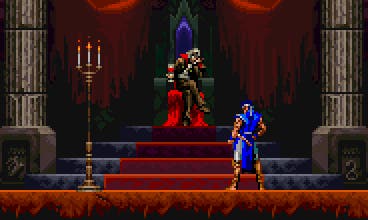
Where Metroid kept its combat simple with only a handful of armaments and an upgrade path confined to finding a few common collectibles (like missile and energy tanks), Symphony of the Night realised it could craft a complex combat system out of this open-ended structure. Gone was the series' reliance on a single whip, and instead it was replaced by dozens of weapons with their own stats and movesets. Combined with the classic Castlevania subweapons and a series of magic buffs, Symphony of the Night managed to merge a hodgepodge of influences into something that felt entirely unique.
Arguably its most audacious decision was to stash away nearly half of the game behind a difficult to discover secret ending. Many believed they'd seen most of what Symphony of the Night had to offer upon slaying Dracula in the throne room. It wasn't until later, maybe through a friend, maybe through message board (the internet was still finding its sea legs in 1997) that we all inevitably heard the glorious truth: that Symphony of the Night contains an entire second castle. It was the rare outlandish schoolyard video game rumour that actually ended up being more than an urban legend.
In an absolutely brilliant design decision, Symphony of the Night's developers decided to make this second castle an upside-down version of Dracula's acropolis. On paper that may sound lazy or repetitious, but in practice this was anything but. Not only did this mirrored castle help the developers save on resources, it provided players with a vague roadmap for how to proceed. Like Symphony of the Night itself, this inverted castle is a place you know, only it's all off. You're walking on the ceiling! Chandeliers are raised towards the heavens on erect chains! New bosses occupy previously abandoned terrain!

It's inventions like these that allowed Symphony of the Night to co-opt a genre rather than simply be written off as a Metroid clone. Konami took an existing template, but rehauled its innards so thoroughly that it emerged a fully-formed beast of its own.
Renovating a tried-and-true series through splicing it with a competitor's DNA has become more commonplace since Symphony of the Night proved its potential. The most recent example to my mind is The Legend of Zelda: Breath of the Wild. Where Symphony of the Night grafted traditional Castlevania design into Metroid's structure, Breathe of the Wild fused Zelda's design into The Elder Scroll's structure. It took what worked about the series in this new format, threw out what didn't, then reinvented the rest.
Like a Quentin Tarantino film, there are few parts of Symphony of the Night that are original in and of themselves, but the way its expansive inspirations are calibrated to cook up a cohesive concoction is classic Castlevania: a pastiche of Grand Guignol Hammer Horror adapted for modern sensibilities. Spooky, oppressive, and layered with obscure mysteries, Castlevania: Symphony of the Night set up a blueprint for how a series can drastically redefine itself while preserving its soul.
